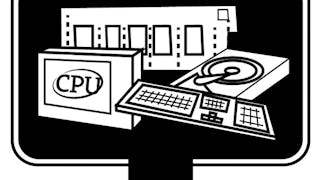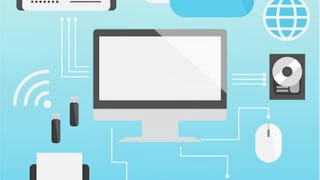Welcome to the "Introduction to Computing Systems" course! This course aims to teach you what a computer is and how it can be programmed. In this course, you will learn about the basic building blocks required to understand the structure of a computer. You will gain insights into numbers, bits, structures to implement operations on numbers, and structures to control the execution of commands by a computer. This course introduces you to logic gates and combinational and sequential circuits. You will learn about a simple processor design with a small instruction set architecture. You will also perform basic assembly programming with that processor. This course covers a wide variety of topics in computing systems that are designed to give you an overview of what’s to come in the BITS Pilani BSc Computer Science degree program.



Introduction to Computing Systems


Instructors: Nishit Narang
Access provided by PARUL UNIVERSITY
1,583 already enrolled
Recommended experience
What you'll learn
Outline the high-level structure of a computer and identify its basic building blocks.
Use combinational and sequential circuits built using logic gates to design the basic building blocks of a computer.
Examine a processor with a simple instruction set architecture and develop simple assembly language programs.
Skills you'll gain
Details to know

Add to your LinkedIn profile
73 assignments
See how employees at top companies are mastering in-demand skills

There are 6 modules in this course
In this module, learners will explore the fundamental components and functions of digital computers, gaining a comprehensive understanding of how computers operate at their core. Students will delve into digital systems and number systems, learning how computers represent and process information using binary digits. The module covers number representation in digital computers and essential operations on bits, providing learners with the foundational knowledge necessary to understand how computers manipulate data at the most basic level.
What's included
10 videos3 readings10 assignments1 plugin
In this module, learners will be introduced to Boolean algebra, the mathematical foundation underlying all digital logic systems and computer operations. Students will learn the principles and laws of Boolean algebra, understanding how logical operations are performed in digital circuits. The module focuses on gate-level minimization techniques, teaching learners how to optimize digital circuits for efficiency and performance, which is crucial for understanding how computers process logical operations and make decisions.
What's included
17 videos2 readings19 assignments1 plugin
In this module, learners will explore both combinational and sequential logic circuits, which form the complete foundation of digital systems and computer architecture. Students will learn to design and analyze combinational circuits where outputs depend solely on current inputs, as well as sequential circuits that incorporate memory elements and time-dependent behavior. The module covers practical applications of both circuit types in computer systems, enabling learners to understand how computers perform arithmetic operations, store information, maintain state, and execute time-dependent operations essential for program execution.
What's included
16 videos2 readings18 assignments
In this module, learners will delve into the fundamental principles of computer organization and architecture, understanding how hardware components work together to form a complete computing system. Students will explore the structure and interconnection of major computer components including the CPU, memory hierarchy, input/output systems, and buses. The module provides insights into how architectural decisions impact system performance and functionality, preparing learners to understand the relationship between hardware design and software execution in modern computing systems.
What's included
7 videos2 readings9 assignments1 plugin
In this module, learners will be introduced to the Instruction Set Architecture (ISA) of the LC-3 (Little Computer 3), a simplified computer model designed for educational purposes. Students will explore the LC-3's instruction set, addressing modes, and machine language format, gaining hands-on experience with how processors decode and execute instructions. The module provides a concrete foundation for understanding processor design and operation, bridging the gap between theoretical computer architecture concepts and practical implementation details essential for assembly programming.
What's included
7 videos2 readings9 assignments
In this module, learners will engage in hands-on assembly language programming using the LC-3 instruction set, applying their knowledge of computer architecture in practical coding exercises. Students will learn to write, debug, and optimize assembly programs, understanding the direct relationship between high-level programming concepts and low-level machine operations. The module covers essential programming techniques in assembly language, enabling learners to appreciate how compilers translate high-level code into machine instructions and how efficient program execution depends on understanding underlying hardware capabilities.
What's included
6 videos2 readings8 assignments1 plugin
Instructors


Why people choose Coursera for their career




Explore more from Computer Science

Birla Institute of Technology & Science, Pilani

Microsoft

University of London

University of California, Irvine

